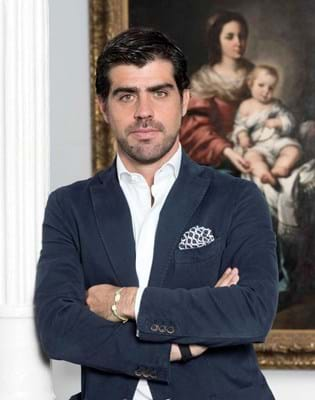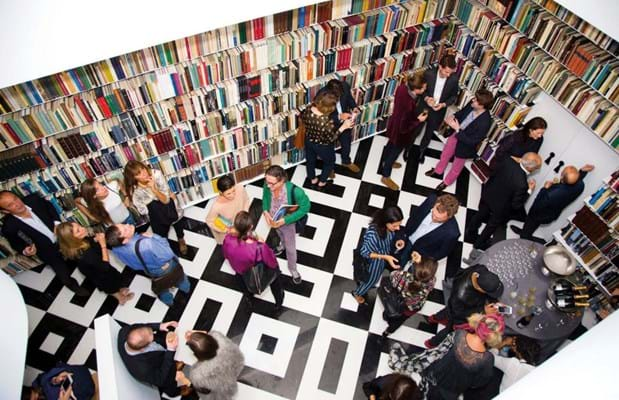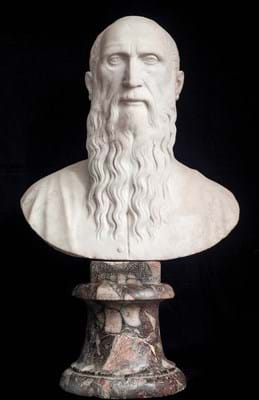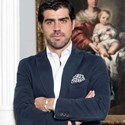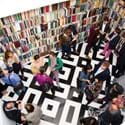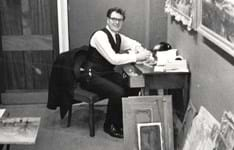THE Old Master market of late has been rocked by a widening fakes scandal. The potential reputational fall-out, coupled with concerns the genre is remaining unfashionable compared to the glamorous world of Contemporary art, means dealers in this sector have a hard task on their hands.
In the midst of this uncertainty some young Spanish dealers are determined – bravely some would say – to shake up the market.
Jorge Coll and his business partner Nicolas Cortés set up the Coll & Cortés art gallery in 2005 in their home town of Madrid. Ten years later they merged with venerable Old Master dealer Colnaghi and now run its plush new gallery in St James’s to which they relocated in 2016. Konrad Bernheimer remains chairman of the 257-year-old business but the pair, and their 20-plus colleagues, are on a quest to revitalise the market and attract younger collectors.
With a thriving Instagram following, swanky parties in their gallery and publicity stunts including their recent ‘The Price is Right’ event (where a Christie’s auction was live-streamed into the Colnaghi gallery), Coll and Cortés have started to slowly inject some vim into a somewhat stuffy sector.
ATG caught up with Coll to find how he and Cortés plan to succeed in a ‘new’ Old Masters market.
LC: Your start in the art market?
JC: Both of our fathers were art dealers, so in some ways we’ve always been in the trade. When we first set up Coll & Cortés, we started with the gallery on Calle Justiniano in Madrid.
We obviously know Spain well and it is a place with a wealth of art. We grew to focus on areas of art history that may have been overlooked, but which are rich in cultural significance.
The most notable were probably our exhibitions and publications on polychrome wood sculpture.
Talk us through how the Colnaghi link came about
Growing up as the son of an art dealer, I first heard of Colnaghi when I was very small. Colnaghi has always fascinated me for having played such an important part in the foundation of those great Golden Age collections such as Frick, Mellon and Gardner.
To me, this was always the preeminent gallery for this area.
It was very fortunate that Nicolas and I always got on so well with Konrad – he grew up in South America, so we share a Spanish spirit! We opened a gallery in Mayfair in 2012 and when we moved out in 2014, to find another space, we mentioned it to Konrad. He was thinking of stepping back a bit and planning for the future of Colnaghi and it happened from there.
Curriculum Vitae
1996-2000
At Pompeu Fabra University, Barcelona
2001-05
Working in the family art-dealing business
2005
Sets up Coll & Cortés gallery in Madrid
2012
Opens London gallery
2015
Merged company with Old Master dealer Colnaghi
Were you aware of the complexities of the Old Master market?
I’d been in this market for a decade as Coll & Cortés, and in the trade all my life, so there weren’t any big surprises. It also depends how you define ‘difficult’ – a lot of it I just see as hard work. We’ve put in a lot of that in the first year as Colnaghi, but looking back, it’s been a good time for us.
What impact have the recent fake paintings scandals had?
In general the market hasn’t been affected. In the overall scheme of things, authenticity issues are exceptionally rare.
How do you attract new buyers to Old Masters?
We’re being proactive in reaching new people, be that through popup exhibitions in the US or young collector events in London. We’re relatively young and here for the long-term – the more people get engaged in the Old Master scene now, the more people will begin collecting in the years to come.
Anyone with an interest in art is someone to embrace. I don’t think there’s a big divide between old and new art, although there can be that perception. The majority of Contemporary artists have an interest in Old Masters and some of the most visited museums in the world are dedicated to older art. We can learn a lot from the Contemporary art scene, showing that Old Master galleries are accessible and welcoming.
Is there more that can be done to promote Old Masters?
Yes, in terms of highlighting the accessibility of Old Masters. These are works that have and will always be seen through contemporary eyes. They need to be accessible in a contemporary context.
Are Old Masters more popular in certain countries than others?
The majority of collectors are from Europe and North America, but we are seeing more collectors from Asia.
A lot of the new collectors are those who collect in other areas, such as Contemporary or Design, who have developed an interest in broadening their collection.
What was the idea behind your ‘Price is Right’ evening?
This is a good example of how we are being proactive in getting new people into the market. We held an event at the gallery for a young crowd, largely in their 20s and 30s, where we live-streamed the evening auction at Christie’s, and the guests had to predict prices. The winner, announced on Instagram, was Ambrose Nauman, son of New York Old Master dealer Otto Nauman.
The exercise gave a fresh approach to auctions, and made the art market instantly entertaining to people who weren’t familiar with it. And you can serve wine in the gallery, which made it probably the rowdiest auction night I’ve seen for a while.
How can Old Master dealers attract young staff?
We are fortunate at the moment to have quite a lot of younger people in the market, and we need to make sure that there is always a next generation.
The majority of people who work in Old Master galleries will have an academic background, so it can only be a good thing that the UK’s history of art A-level has been reinstated.
What are the biggest opportunities and threats for the Old Masters scene in London?
The greatest threat is nearly always a diminishing supply, but this can be overstated. There are plenty of great works still out there in private collections. I am very optimistic for the future of Old Master dealers in London. There is such a strong undercurrent of younger collectors and dealers setting up.
With a growing global audience for art we are being presented with opportunities like never before.


